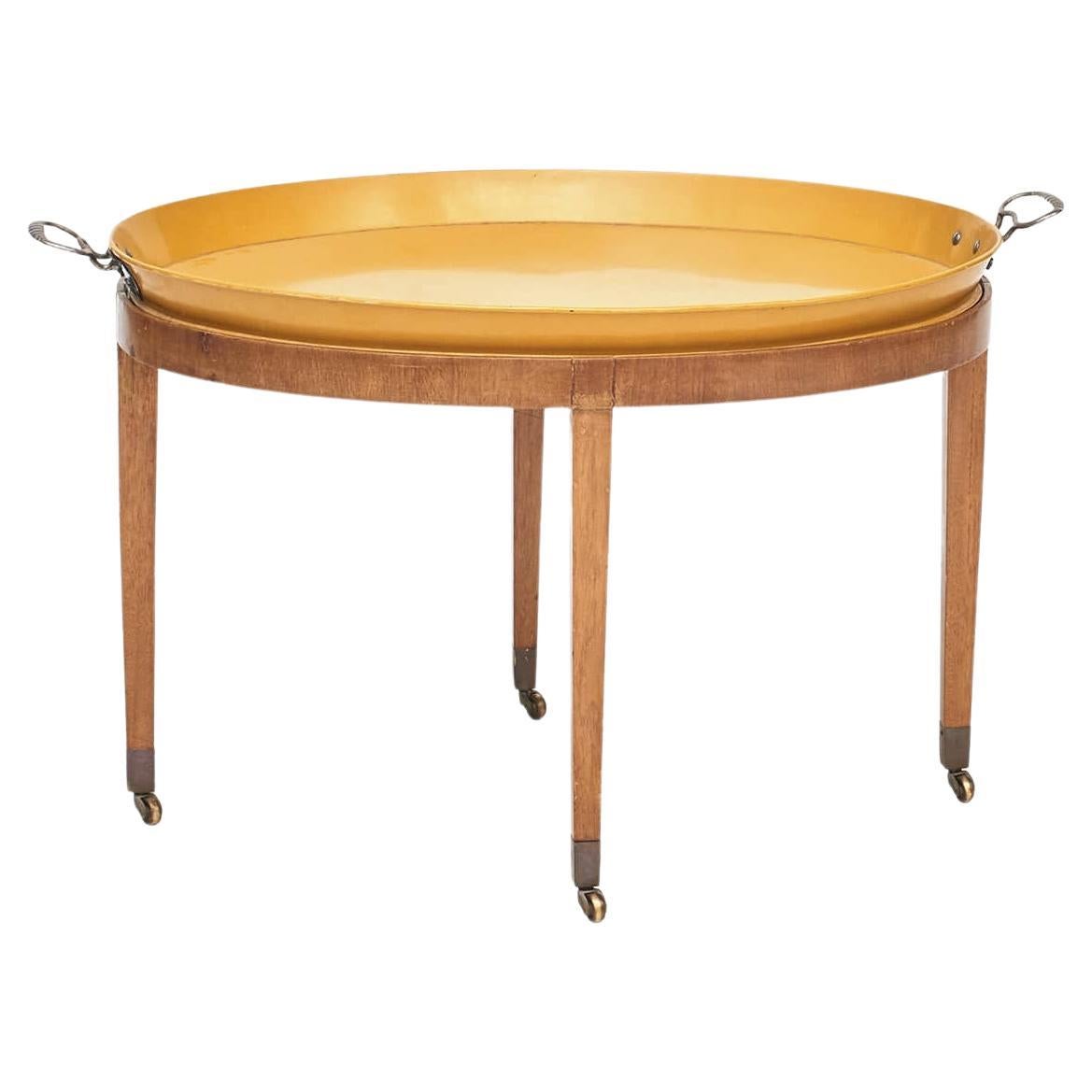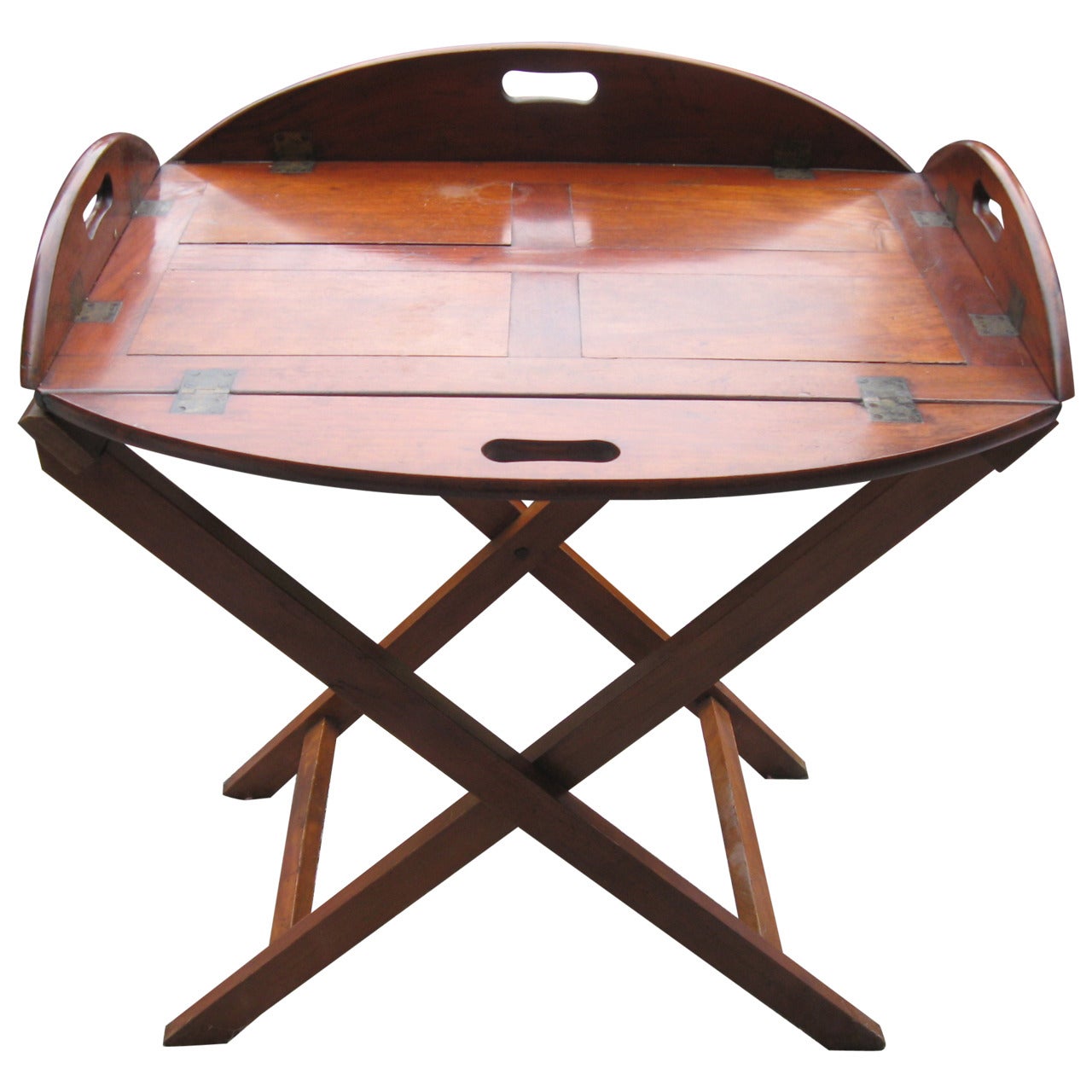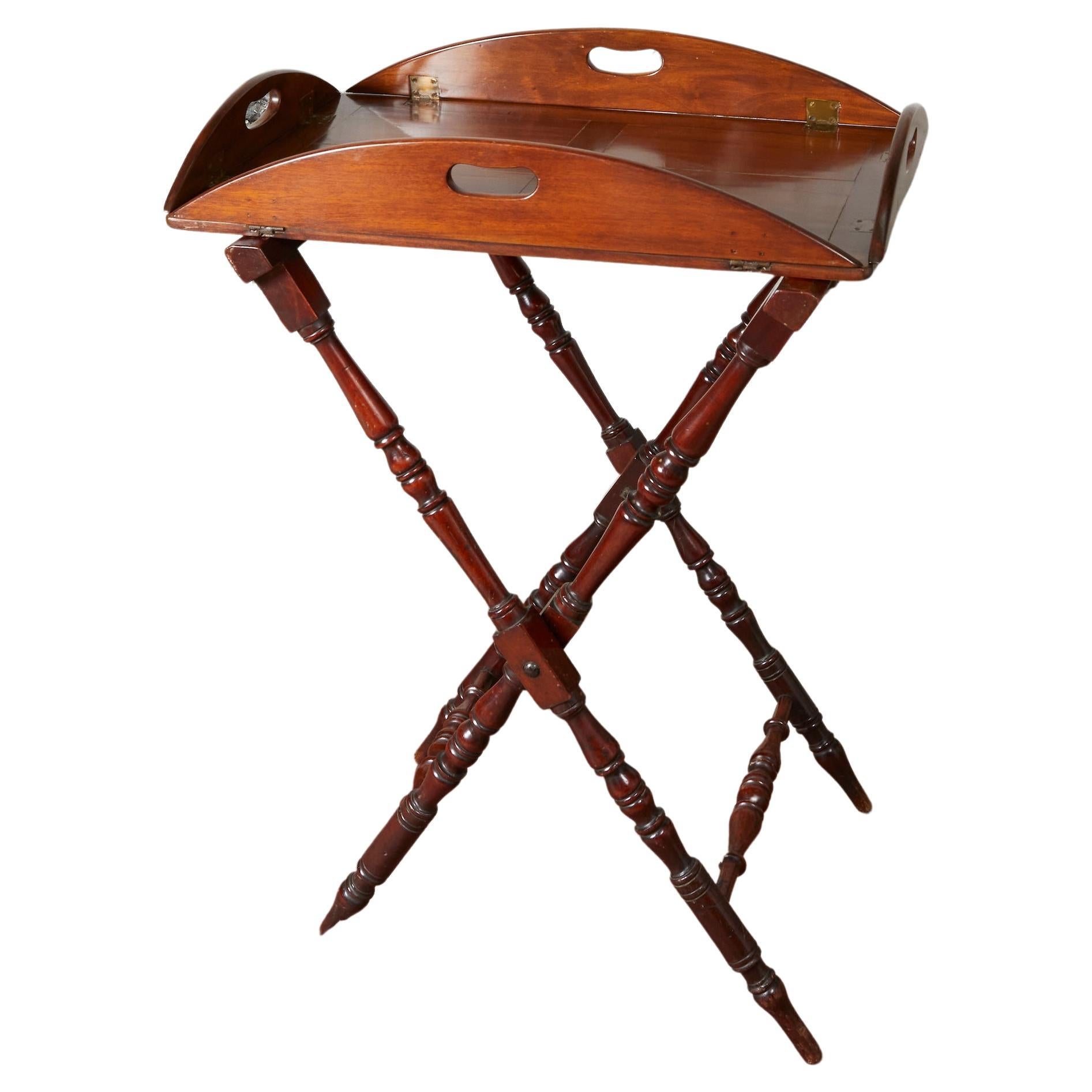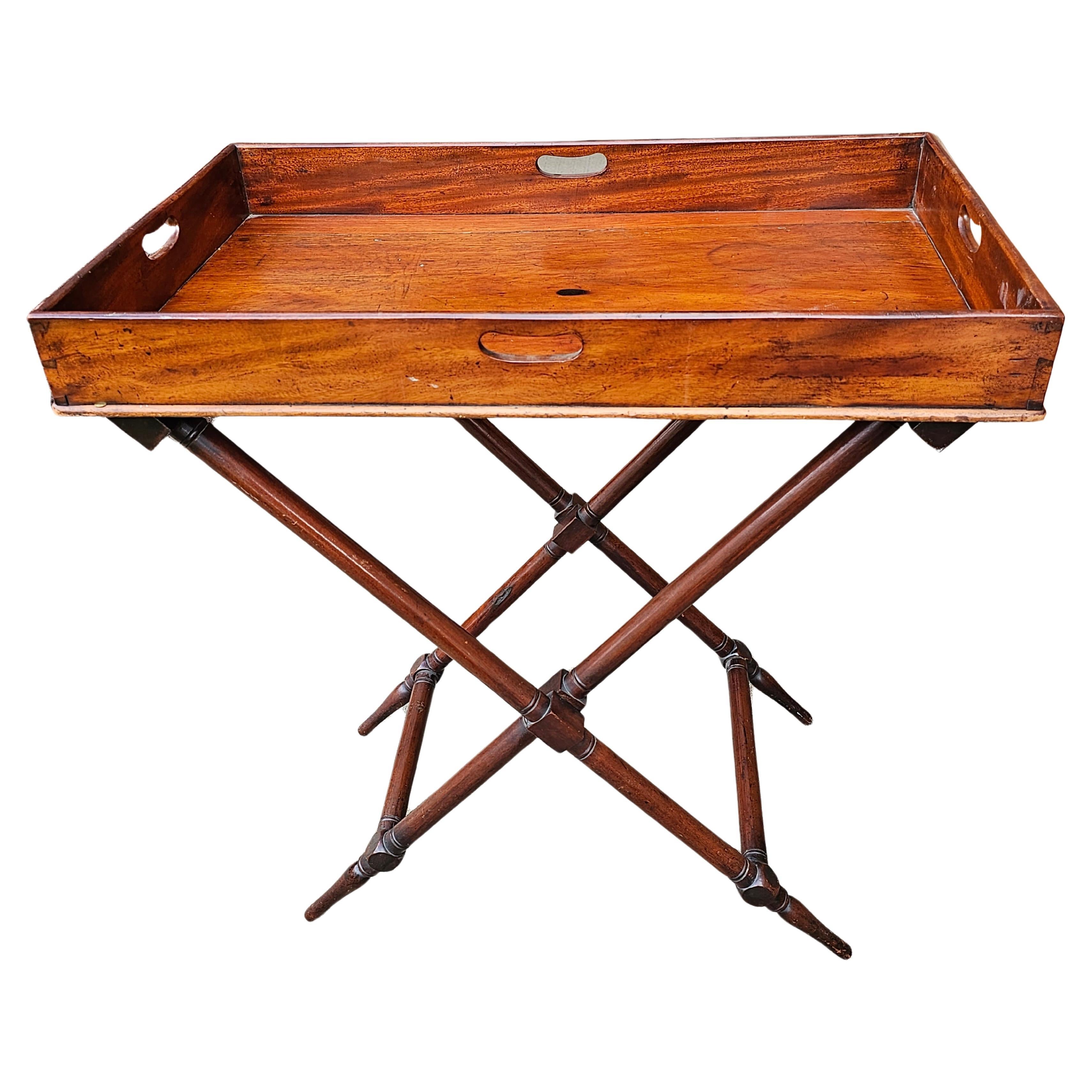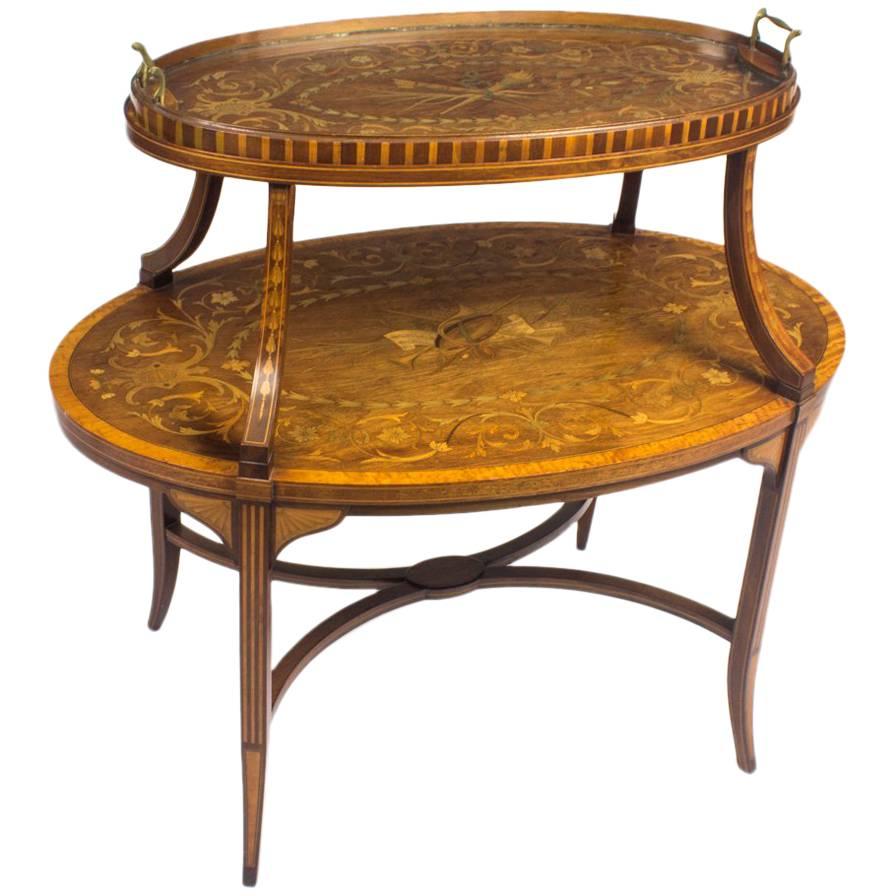Items Similar to Antique English 19th Century Sheraton Revival Mahogany Tray Table
Want more images or videos?
Request additional images or videos from the seller
1 of 9
Antique English 19th Century Sheraton Revival Mahogany Tray Table
About the Item
Antique English 19th century Sheraton Revival Mahogany Tray Table.
circa 1890.
In very good condition commensurate with age.
- Dimensions:Height: 22.05 in (56 cm)Width: 27.56 in (70 cm)Depth: 17.72 in (45 cm)
- Style:Sheraton (In the Style Of)
- Materials and Techniques:
- Place of Origin:
- Period:
- Date of Manufacture:1890
- Condition:Wear consistent with age and use.
- Seller Location:London, GB
- Reference Number:1stDibs: LU5559233611292
About the Seller
5.0
Gold Seller
These expertly vetted sellers are highly rated and consistently exceed customer expectations.
1stDibs seller since 2020
89 sales on 1stDibs
Typical response time: <1 hour
- ShippingRetrieving quote...Ships From: London, United Kingdom
- Return PolicyA return for this item may be initiated within 1 day of delivery.
More From This SellerView All
- Antique English 19th Century Sheraton Revival Mahogany Display Cabinet on StandLocated in London, GBAntique English 19th century Sheraton revival mahogany display cabinet on stand. A 19th century mahogany display cabinet on stand,...Category
Antique 19th Century English Sheraton Vitrines
MaterialsGlass, Mahogany
- 4 Antique English 19th Century Chippendale Revival Mahogany ChairsLocated in London, GB4 Antique English 19th century Chippendale revival mahogany chairs. circa 1890. A Fine set of four Chippendale revival mahogany chairs with elaborately carved pierced lattice work ...Category
Antique Late 19th Century English Chippendale Chairs
MaterialsMahogany
- Pair English Georgian 18th Century Revival Leather Inset Drop Leaf Sofa TablesLocated in London, GBA pair of fine quality Georgian 18th century Sheraton Revival drop sofa tables with leather inset tops. Constructed in Mahogany with Satinwood...Category
20th Century English Drop-leaf and Pembroke Tables
MaterialsLeather, Satinwood
- Pair Antique English Sheraton Revival Hall Chairs C.1900Located in London, GBA Pair of Antique English Sheraton Revival Hall Chairs England C.1900. Satinwood Inlaid Mahogany with upholstered seats.Category
Antique Early 1900s English Sheraton Chairs
MaterialsMahogany, Satinwood
- Antique English Edwardian Inlaid Walnut Hall Table Console C.1900Located in London, GBAntique English Edwardian inlaid walnut hall Table C.1900 An Edwardian inlaid walnut stretcher table, the foliate decorated rectangular top on tur...Category
Antique Early 1900s English Edwardian Console Tables
MaterialsSatinwood, Walnut
- Pair English 19th Century Greek Revival Vases C.1830Located in London, GBPair of English 19th century Greek Revival vases England, C.1830 Staffordshire pottery A pair of pottery vases decorated in a Grecian style ...Category
Antique 19th Century English Greek Revival Vases
MaterialsPottery
You May Also Like
- Danish Empire Yellow Metal Tray Table, Denmark Early 19th CenturyLocated in Kastrup, DKLarge Danish empire tray table. Tray in yellow-painted metal with silver-plated carrying handles. On later mahogany base with tapered legs ending in brass feet and casters. Orig...Category
Antique Early 19th Century Danish Empire Tray Tables
MaterialsMetal, Brass
- 19th Century English Mahogany Butlers Tray TableLocated in Water Mill, NY19th century English mahogany butlers tray table on a bar height stand with brass hinges.Category
Antique 19th Century English Tray Tables
MaterialsBrass
- 19th Century English Mahogany Butlers Tray TableLocated in Montreal, QCMahogany folding butlers tray on stand tray has four folding sides with inset brass hinges. Supported on folding stand with decorative turned supports. The dimensions are with the ...Category
Antique 1830s English Regency Serving Tables
MaterialsMahogany
- 19th Century English Mahogany Butler's Tray TableLocated in Germantown, MD19th Century English Mahogany Butler's folding Tray Table. Newer Base Measures 32" in width, 19.5" in depth and stand 34.75". Tray is 3.25" in height.Category
Antique 19th Century American Anglo-Japanese Tray Tables
MaterialsMahogany
- 19th Century English Mahogany & Satinwood Etagere Tray TableLocated in London, GBThis is a truly exceptional antique English Edwardian mahogany and satinwood marquetry oval two tier 'etagere', in the manner of Edwards & Roberts, circa 1890 in date. Crafted from the best flame mahogany, note the wonderful grain to the wood and the beautifully inlaid decoration with musical trophies within scrolling foliage and kingwood crossbanding. Masterfully inlaid with Sheraton influences, this etagere has an elegant refined look. The removable glass bottomed tray can be used to serve drinks, etc. It is raised on elegant square section tapering outswept legs with a shaped cross stretcher. The craftsmanship and finish are second to none. THE BOTANICAL NAME FOR THE MAHOGANY THIS ITEM IS MADE OF IS SWIETENIA MACROPHYLLA AND THIS TYPE OF MAHOGANY IS NOT SUBJECT TO CITES REGULATION. Condition: In excellent condition having been beautifully cleaned and waxed in our workshops, please see photos for confirmation. Dimensions in cm: Height 84 x Width 89 x Depth 55 Dimensions in inches: Height 33.1 x Width 35.0 x Depth 21.7 Edwards & Roberts was founded in 1845, and had premises at 21 Wardour Street London. By the 1892 they occupied more than a dozen buildings in Wardour Street, where they continued to trade until the end of the century. They became one of the leading London cabinet makers and retailers working in a variety of styles, both modern and revivalist. Their business also involved retailing, adapting and restoring the finest antique furniture and there are many examples of their earlier furniture with later embellishments bearing their stamp. Edwards & Roberts specialised in marquetry, inlay and ormolu. Marquetry is decorative artistry where pieces of material (such as wood, pewter, or brass silver) of different colours are inserted into surface wood veneer to form intricate patterns such as scrolls or flowers. The technique of veneered marquetry had its inspiration in 16th century Florence. Marquetry elaborated upon Florentine techniques of inlaying solid marble slabs with designs formed of fitted marbles, jaspers and semi-precious stones. This work, called opere di commessi, has medieval parallels in Central Italian "Cosmati"-work of inlaid marble floors, altars and columns. The technique is known in English as pietra dura, for the "hardstones" used: onyx, jasper, cornelian, lapis lazuli and colored marbles. In Florence, the Chapel of the Medici at San Lorenzo is completely covered in a colored marble facing using this demanding jig-sawn technique. Techniques of wood marquetry were developed in Antwerp and other Flemish centers of luxury cabinet-making during the early 16th century. The craft was imported full-blown to France after the mid-seventeenth century, to create furniture of unprecedented luxury being made at the royal manufactory of the Gobelins, charged with providing furnishings to decorate Versailles and the other royal residences of Louis XIV. Early masters of French marquetry were the Fleming Pierre Golle and his son-in-law, André-Charles Boulle, who founded a dynasty of royal and Parisian cabinet-makers (ébénistes) and gave his name to a technique of marquetry employing brass with pewter in arabesque or intricately foliate designs. Etagère is a piece of light furniture which was extensively made in France during the latter part of the 18th century. It consists of a series of stages or shelves for the reception of ornaments or other small articles. Like the what-not it was very often cornerwise in shape, and the best Louis XVI examples in exotic woods are exceedingly graceful and elegant. In modern usage, an étagère is often used to refer specifically to a long-legged shelf unit that fits over a bathroom toilet...Category
Antique 1890s English Edwardian Tray Tables
MaterialsMahogany, Satinwood
- Antique English Marquetry Etagere Tray Table, 19th CenturyLocated in London, GBThis is a truly exceptional antique English Edwardian mahogany and satinwood banded marquetry oval two tier 'etagere', in the manner of Edwards & Roberts, circa 1890 in date. Crafted from the best flame mahogany, note the wonderful grain to the wood and the beautifully inlaid decoration with musical trophies within scrolling foliage and kingwood crossbanding. Masterfully inlaid with Sheraton influences, this etagere has an elegant refined look. The removable glass bottomed tray can be used to serve drinks, etc. It is raised on elegant square section tapering outswept legs with a shaped cross stretcher. The craftsmanship and finish are second to none. THE BOTANICAL NAME FOR THE MAHOGANY THIS ITEM IS MADE OF IS SWIETENIA MACROPHYLLA AND THIS TYPE OF MAHOGANY IS NOT SUBJECT TO CITES REGULATION. Condition: In excellent condition having been beautifully cleaned and waxed in our workshops, please see photos for confirmation. Dimensions in cm: Height 86 x Width 90 x Depth 55 Dimensions in inches: Height 2 foot, 10 inches x Width 2 foot, 11 inches x Depth 1 foot, 10 inches Edwards & Roberts was founded in 1845, and had premises at 21 Wardour Street London. By the 1892 they occupied more than a dozen buildings in Wardour Street, where they continued to trade until the end of the century. They became one of the leading London cabinet makers and retailers working in a variety of styles, both modern and revivalist. Their business also involved retailing, adapting and restoring the finest antique furniture and there are many examples of their earlier furniture with later embellishments bearing their stamp. Edwards & Roberts specialised in marquetry, inlay and ormolu. Marquetry is decorative artistry where pieces of material (such as wood, pewter or brass silver) of different colours are inserted into surface wood veneer to form intricate patterns such as scrolls or flowers. The technique of veneered marquetry had its inspiration in 16th century Florence. Marquetry elaborated upon Florentine techniques of inlaying solid marble slabs with designs formed of fitted marbles, jaspers and semi-precious stones. This work, called opere di commessi, has medieval parallels in Central Italian "Cosmati"-work of inlaid marble floors, altars and columns. The technique is known in English as pietra dura, for the "hardstones" used: onyx, jasper, cornelian, lapis lazuli and colored marbles. In Florence, the Chapel of the Medici at San Lorenzo is completely covered in a colored marble facing using this demanding jig-sawn technique. Techniques of wood marquetry were developed in Antwerp and other Flemish centers of luxury cabinet-making during the early 16th century. The craft was imported full-blown to France after the mid-seventeenth century, to create furniture of unprecedented luxury being made at the royal manufactory of the Gobelins, charged with providing furnishings to decorate Versailles and the other royal residences of Louis XIV. Early masters of French marquetry were the Fleming Pierre Golle and his son-in-law, André-Charles Boulle, who founded a dynasty of royal and Parisian cabinet-makers (ébénistes) and gave his name to a technique of marquetry employing brass with pewter in arabesque or intricately foliate designs. Etagère is a piece of light furniture which was extensively made in France during the latter part of the 18th century. It consists of a series of stages or shelves for the reception of ornaments or other small articles. Like the what-not it was very often cornerwise in shape, and the best Louis XVI examples in exotic woods are exceedingly graceful and elegant. In modern usage, an étagère is often used to refer specifically to a long-legged shelf unit that fits over a bathroom toilet...Category
Antique 1890s English Edwardian Tray Tables
MaterialsSatinwood, Mahogany
Recently Viewed
View AllMore Ways To Browse
19th Century Sheraton Table
English Antique Sheraton
English Sheraton Table
Sheraton Revival Satinwood
Antique Mahogany Tray Tables
Antique English Tray Table
Satinwood Inlay Tray
Mahogany Butlers Trays
Butlers Tray Stand
Butler Tray Stand
Mid Century Butler
Antique French Tray Table
Golden Tray
Gilt Papier Mache
Butlers Tray And Stand
Large Mahogany Tray
Serving Tray With Stand
Tabletop Tray
